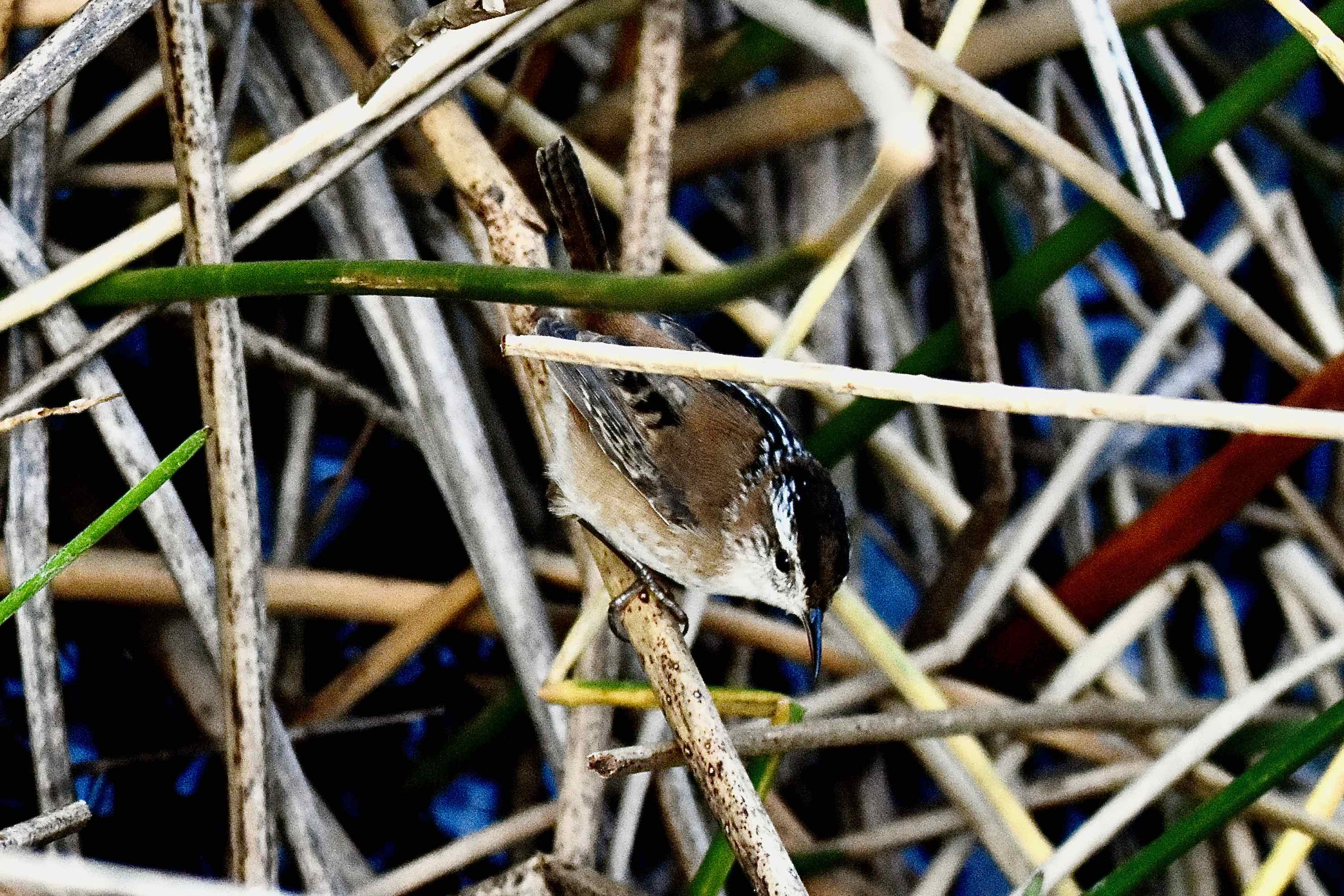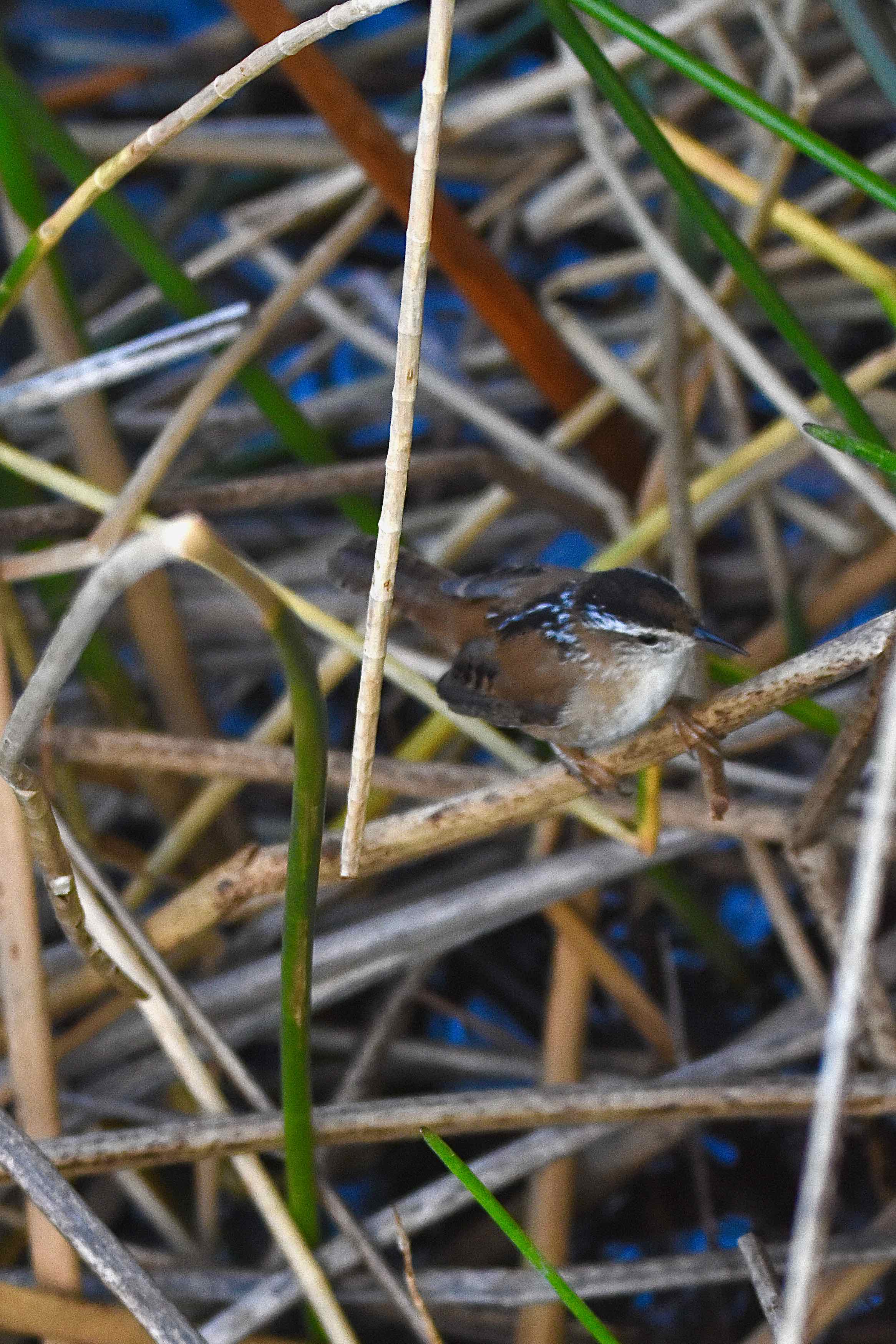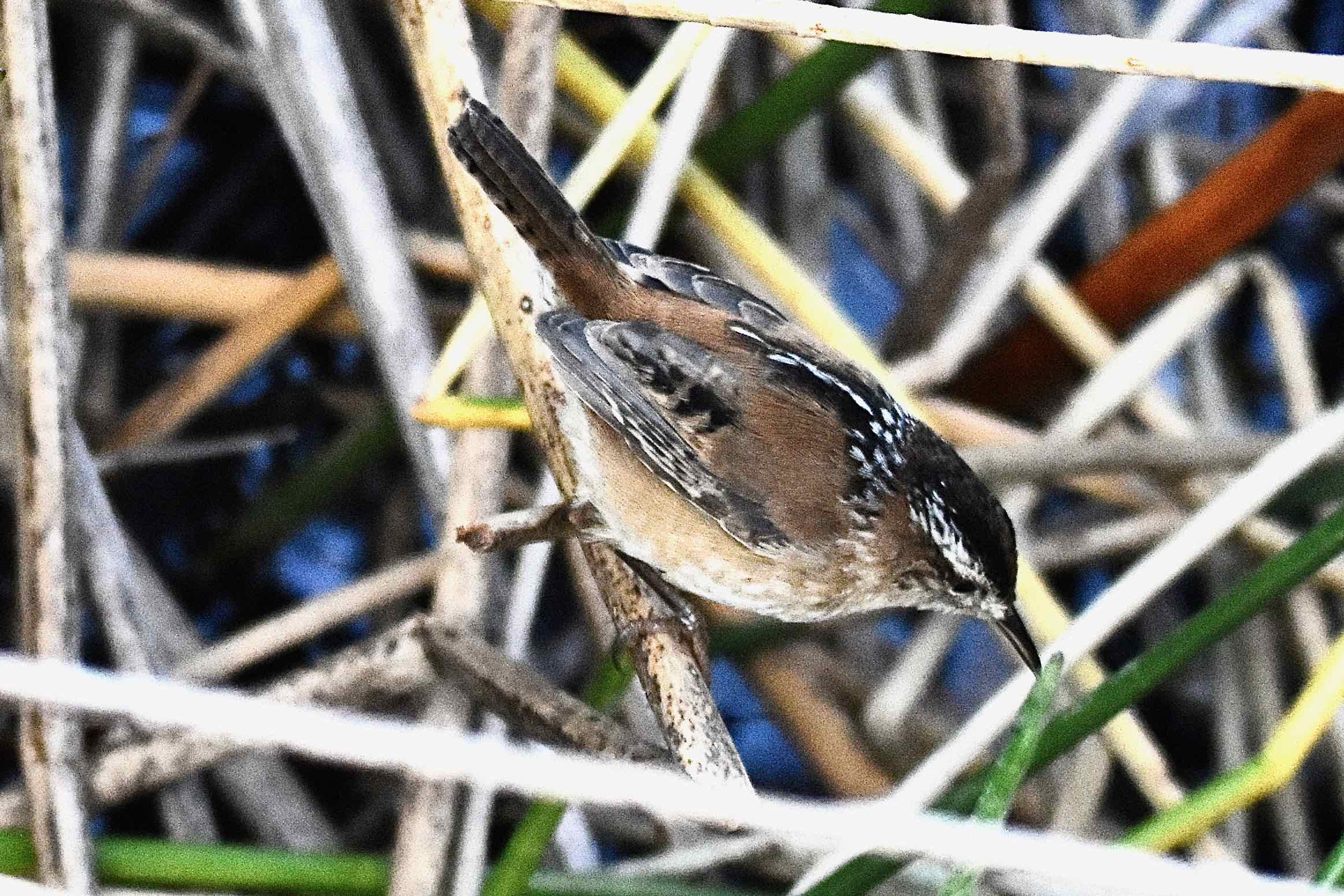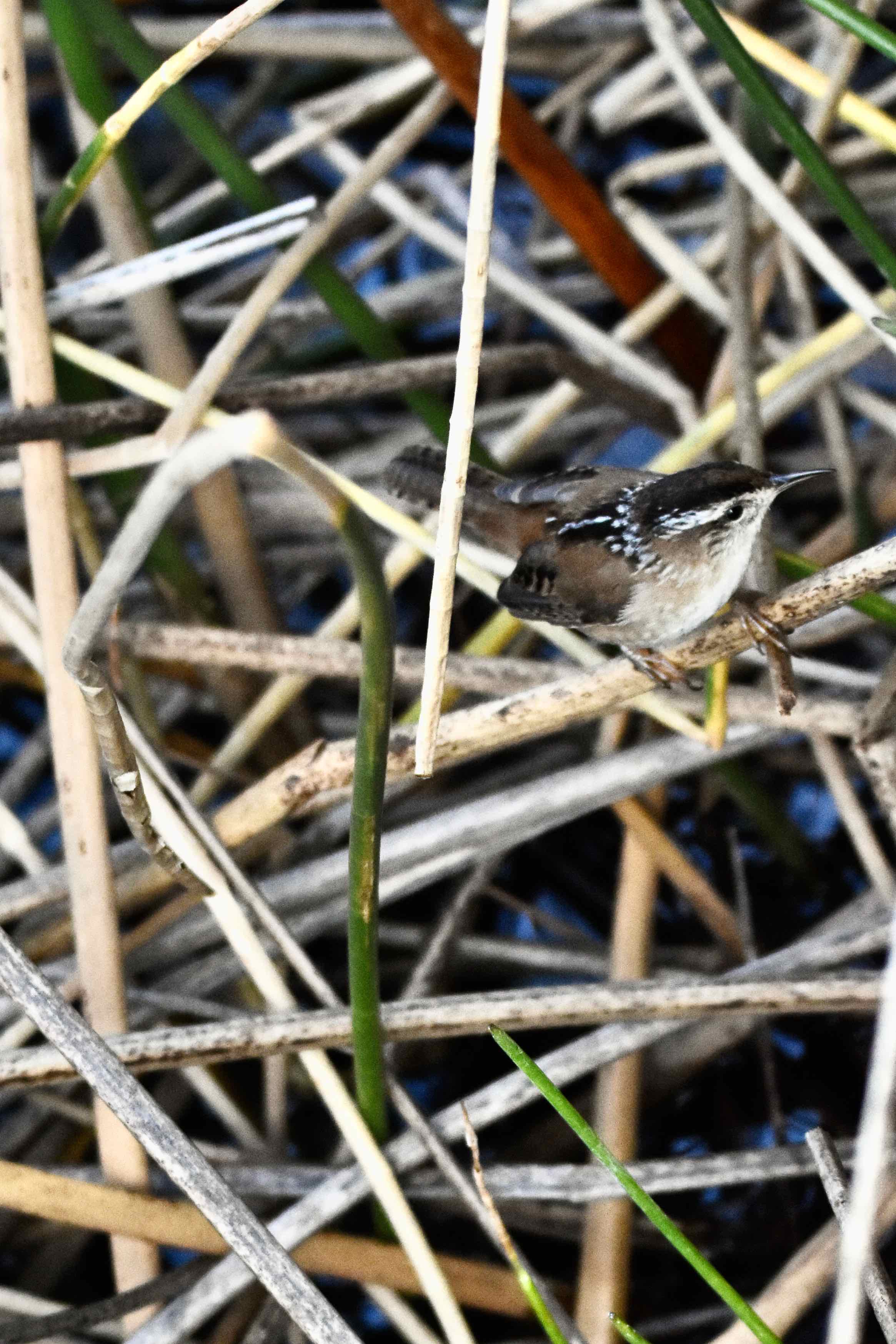
Marsh wren, photographed at Green Cay Nature Center, Boynton Beach, Palm Beach County, in February 2017.
To many, the marsh wren, Cistothorus palustris, is the William Hung of the songbird world. Hung, you might recall, earned 15 minutes of fame on American Idol in 2004 with a strikingly bad rendition of Ricky Martin's She Bang in a futile attempt to earn a spot on the singing competition show.
The marsh wren is similarly unmelodious, and like other wrens, extremely loud, especially in proportion to its tiny size. None other than James Audubon compared the songs of the marsh wren to the "gratings of a rusty hinge," according to the Cornell Laboratory of Ornithology. Another naturalist called the marsh wren "deficient and contemptible in singing." Not only is the singing loud, it's nearly constant, going on day and night.
But what the marsh wren lacks in quality, it makes up for in quantity and complexity. A marsh wren male will learn as many as 50,200 song types, which it will use to earn the fleeting affections of a lady marsh wren and to defend his territory against other males. More on that later.
Marsh wrens are mostly migratory birds, found nearly everywhere in the continental United States at one time or another. They are mostly winter visitors to Florida and parts of the Gulf and Atlantic coasts as well as much of the Southwest, into Mexico.
They spend summers in portions of the MidAtlantic states, westward into the Great Plains and into Canada. They are year-round residents in parts of the Pacific Northwest. Two subspecies, Worthing's (C. p. Greiseus) in the northeastern corner of the state (Duval and Nassau counties), and Marian's (C. p. Marianae) along the Gulf Coast between Tampa Bay and Santa Rosa County in the Panhandle, are present year-round and breed in salt- and brackish water marshes. Migrating birds are found in freshwater marshes, but they don't nest here.
Marsh wrens are more likely heard than seen, in part because they spend most of the time in dense, reedy wetlands. As noted, they are small birds and perfectly colored to fit into the background. They forage for insects, spiders and other bugs on or just above the surface of the water. Occasionally, they'll dart out to take an insect on the fly.
Marsh wrens have a thin bill, dark skull cap, a light brown face and a prominent white eyeline that extends to the back of the head. The underside is light brown to white, wings and back are a mix of browns, whites and blacks. Males and females are similarly plumed, both between four and six inches in length.
Males build dummy nests, sometimes as many as 20, according to Audubon, most of which are never used to raise young. When a female approaches a male's territory, he will fly over her and sing; if she enters his territory, he'll show her some of his nests. If she likes the dude, the female will choose one of his nests and line it with finer materials. Or she might decide to build a nest of her own.
Marsh wren nests are dome-shaped weaves of grass, cattails and other plants, with an opening on the side and attached to reeds a few feet above the water. Clutches are generally four or five eggs that require about two weeks of incubation, all done by mom. Both parents feed their offspring, but females probably do more of it. The young leave the nest in about two weeks. They can have two, sometimes three, broods, per year in Florida.
Marsh wrens aren't exactly monogamous, but the rate of males mating with more than one female varies greatly by geography — as low as 5 percent to more than 50 percent. Both males and females aggressively defend their territory. They are also known to pierce and sometimes consume the eggs of other bird species in their territory. They also attack nests of their own kind and males even their own eggs if the female isn't present on the nest.
According to the Florida Fish and Wildlife Conservation Commission, marsh wrens once nested as far south as New Smyrna Beach, but retreated north as mangroves started moving north and displacing what had been saltwater marshes. They are considered a species of special concern in Florida because of their limited nesting habitat.
Marsh wrens are members of Troglodytidae, the family of wrens. Another name for this bird: thin-billed wren.
Green Cay Nature Center



